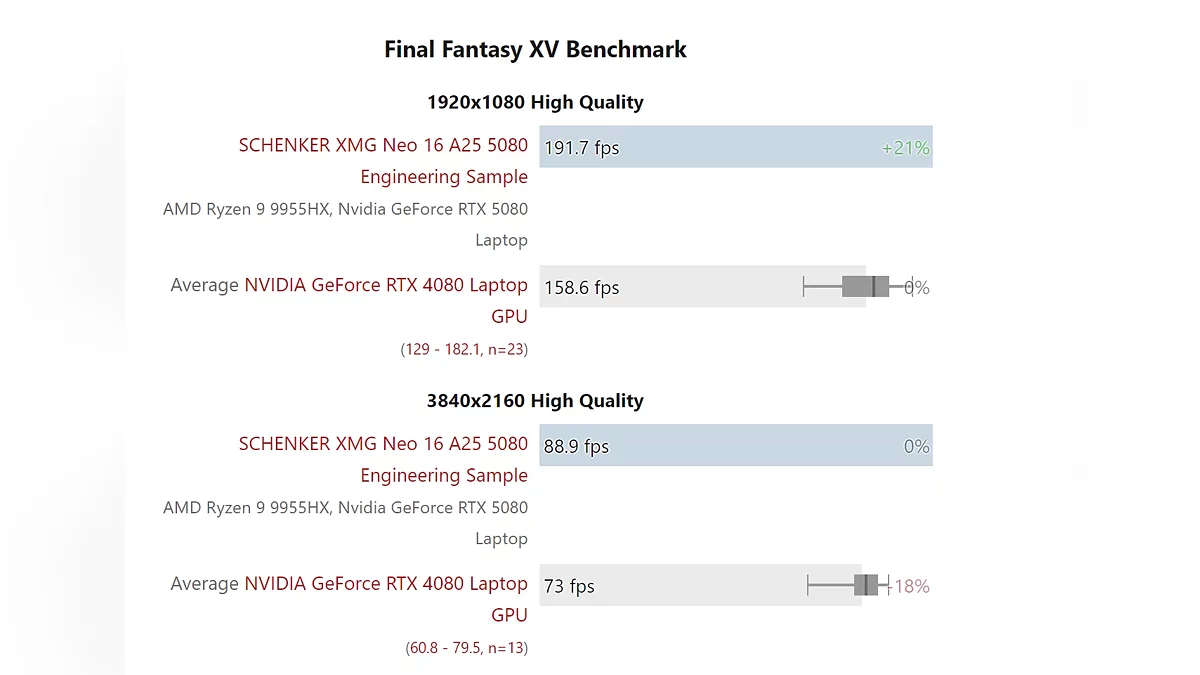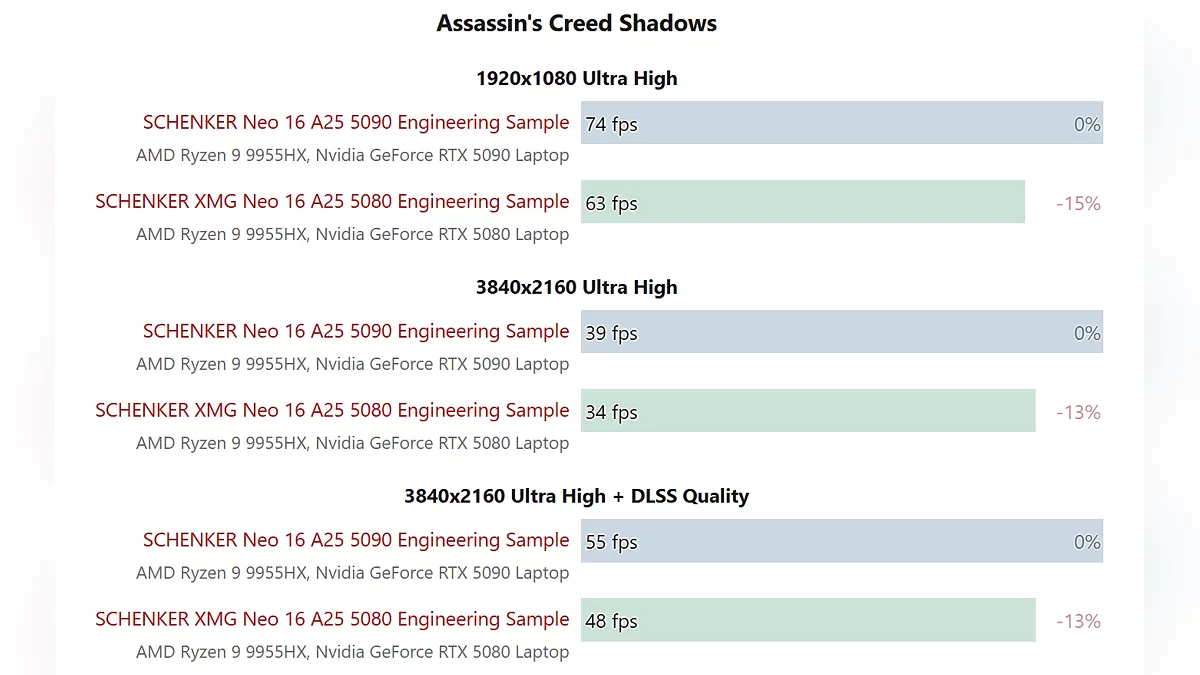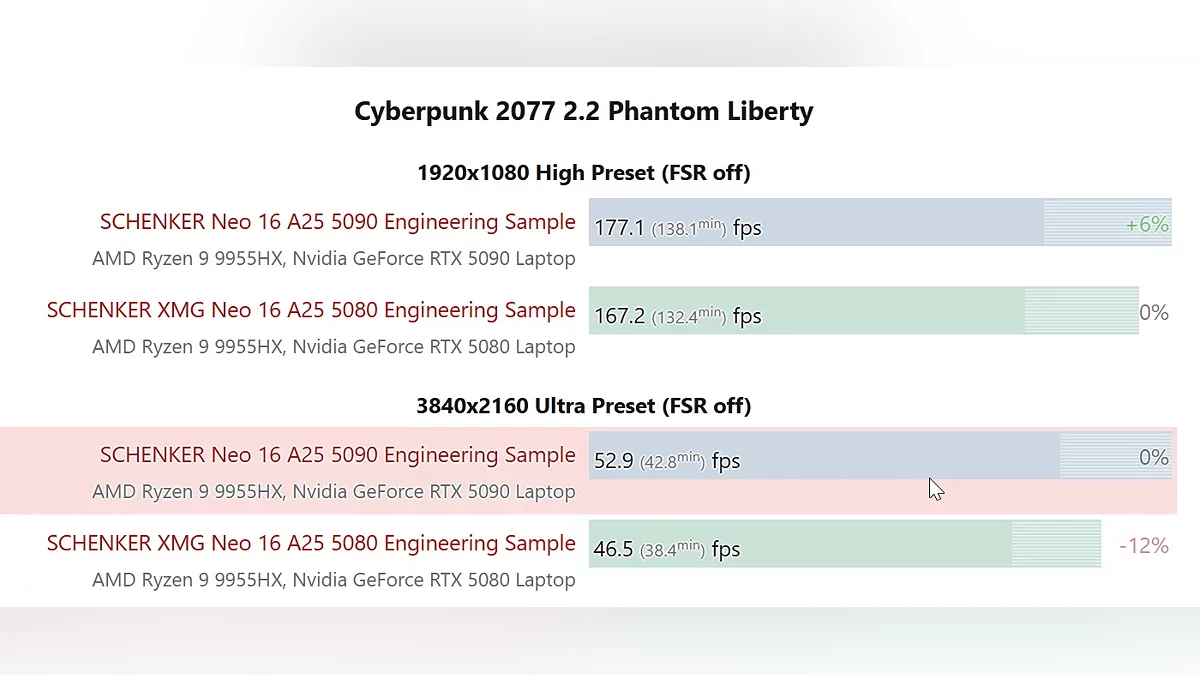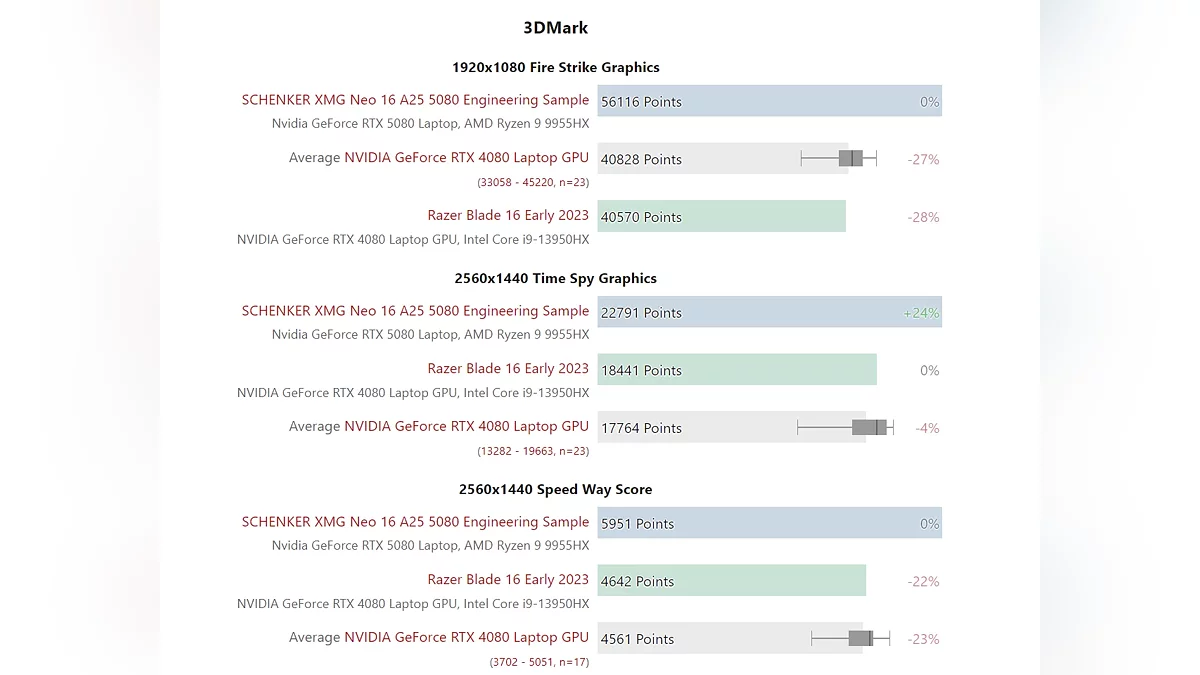First Mobile RTX 5090 and RTX 5080 Benchmarks Reveal Minimal Gains at a Premium Price
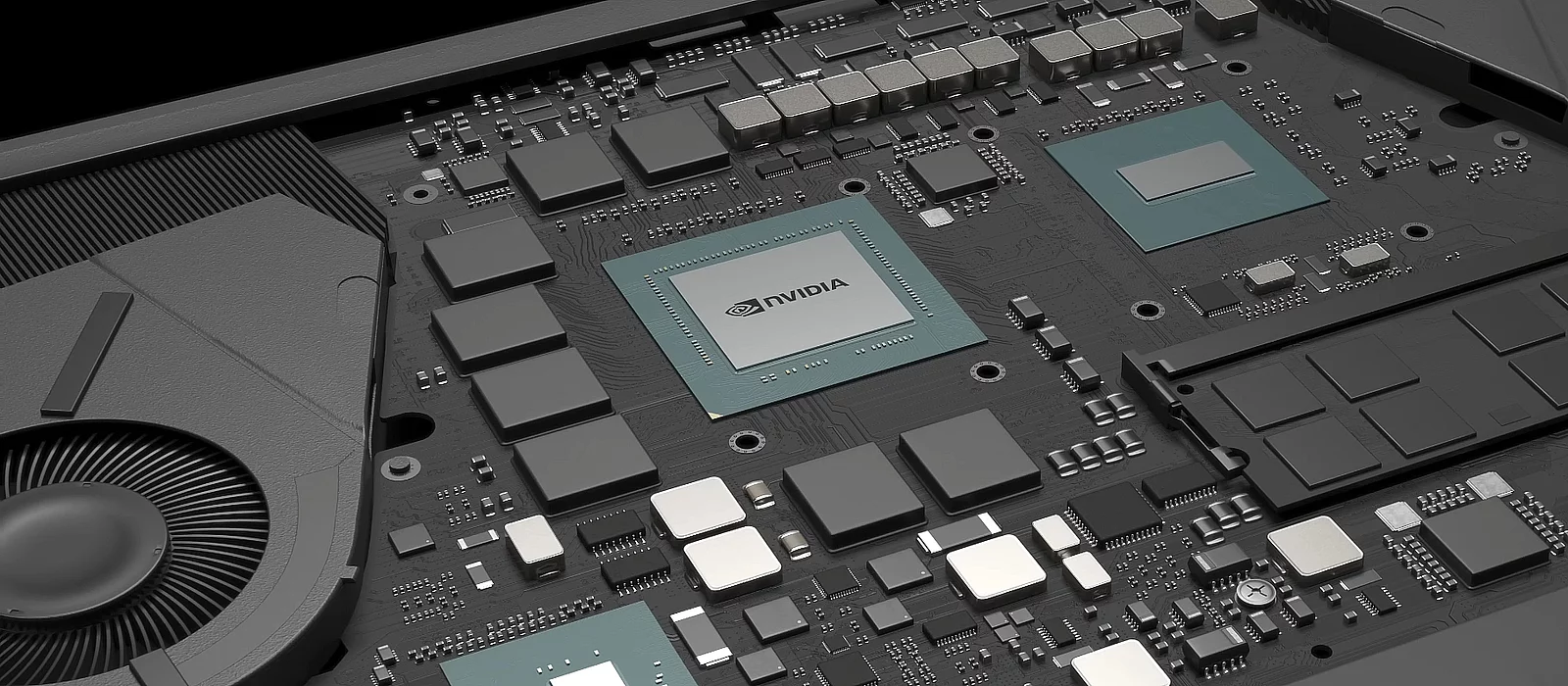
Early benchmarks of NVIDIA’s next-gen mobile GPUs have uncovered a surprisingly modest performance gap between the flagship RTX 5090 and its more affordable counterpart, the RTX 5080. Despite a hefty price premium — around 75% higher — the top-tier model only outperforms the lower-end card by about 10–15% in gaming and synthetic benchmarks, casting doubt on the value of paying extra for the slight boost.
Both cards share the same power envelope of 150W, with a potential boost up to 175W thanks to Dynamic Boost. However, the RTX 5090 comes with 27% more CUDA cores and 33% more video memory. Still, in real-world scenarios, this edge doesn’t translate into a proportional increase in performance. For instance, in games like Assassin's Creed: Shadows or Baldur's Gate 3 at 4K resolution, the performance difference can reach 15%, but in less demanding titles — or when using DLSS — the gap narrows considerably.
Testing was carried out on identically specced Schenker Neo 16 laptops equipped with an AMD Ryzen 9 9955HX processor. The results confirmed that even under resource-intensive conditions, the RTX 5080 holds its own against the more expensive model. Its main selling point is its price: for many users, the extra 10–15% performance increase does not justify the steep cost, especially if ultra settings in 4K aren’t a priority. This situation mirrors the dynamic seen in NVIDIA’s previous lineup between the RTX 4080 and RTX 4090, where the lower-tier card also offered a more attractive price-to-performance ratio.
In summary, the RTX 5080 emerges as the optimal choice for those seeking high performance without overpaying for marginal gains. Opting for it could free up a significant budget that can be better invested in upgrading other components of the system.
-
NVIDIA's AI Assistant Turns Games into a Slideshow
-
Rumor: NVIDIA Plans to Launch Two Versions of GeForce RTX 5060 Ti in April
-
NVIDIA Defends RTX 50 Failure, Blames Users
-
NVIDIA 572.XX Drivers Are Killing RTX 30 and 40, but the Company Stays Silent
-
NVIDIA Adopts GAA Transistors: Huang Promises a 20% Boost in Performance
